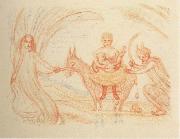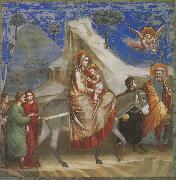
Oil On
Canvas, Real Flavor of Old Masters
|
Adam Elsheimer
|
|||
|
|
|||
|
|
|||
|
|
Flight into Egypt Adam Elsheimer3.jpg Painting ID:: 1131 Visit European Gallery |
1609 Pinakothek, Munich | |
Height Width |
INS/CM |
||
|
X |
|
||
|
|
|||
|
James Ensor
|
|||
|
|
|||
| Belgian 1860-1949 Belgian painter, printmaker and draughtsman. No single label adequately describes the visionary work produced by Ensor between 1880 and 1900, his most productive period. His pictures from that time have both Symbolist and Realist aspects, and in spite of his dismissal of the Impressionists as superficial daubers he was profoundly concerned with the effects of light. His imagery and technical procedures anticipated the colouristic brilliance and violent impact of Fauvism and German Expressionism and the psychological fantasies of Surrealism. Ensor most memorable and influential work was almost exclusively produced before 1900, but he was largely unrecognized before the 1920s in his own country. His work was highly influential in Germany, however: Emil Nolde visited him in 1911, and was influenced by his use of masks; Paul Klee mentions him admiringly in his diaries; Erich Heckel came to see him in the middle of the war and painted his portrait (1930; Cologne, Wallraf-Richartz-Mus.); Alfred Kubin owned several of his prints, while Marc Chagall and George Grosz also adapted certain elements from Ensor. All the artists of the Cobra group saw him as a master. He influenced many Belgian artists including Leon Spilliaert, Rik Wouters, Constant Permeke, Frits van den Berghe, Paul Delvaux and Pierre Alechinsky. | |||
|
|
|||
|
|
Flight into Egypt new11/James Ensor-477289.jpg Painting ID:: 37432 Visit European Gallery |
mk126 | |
Height Width |
INS/CM |
||
|
X |
|
||
|
|
|||
|
GIOTTO di Bondone
|
|||
|
|
|||
| Italian Early Renaissance Painter, 1267-1337 Italian painter and designer. In his own time and place he had an unrivalled reputation as the best painter and as an innovator, superior to all his predecessors, and he became the first post-Classical artist whose fame extended beyond his lifetime and native city. This was partly the consequence of the rich literary culture of two of the cities where he worked, Padua and Florence. Writing on art in Florence was pioneered by gifted authors and, although not quite art criticism, it involved the comparison of local artists in terms of quality. The most famous single appreciation is found in Dante's verses (Purgatory x) of 1315 or earlier. Exemplifying the transience of fame, first with poets and manuscript illuminators, Dante then remarked that the fame of Cimabue, who had supposed himself to be the leader in painting, had now been displaced by Giotto. Ironically, this text was one factor that forestalled the similar eclipse of Giotto's fame, which was clearly implied by the poet. | |||
|
|
|||
|
|
Flight into Egypt new12/GIOTTO di Bondone-652883.jpg Painting ID:: 40128 Visit European Gallery |
mk156 200x185cm 1303-05 | |
Height Width |
INS/CM |
||
|
X |
|
||
|
|
|||
|
Adam Elsheimer
|
|||
|
|
|||
| 1578-1610 German Adam Elsheimer Locations German painter, printmaker and draughtsman, active in Italy. His small paintings on copper established him after his brief life as the most singular and influential German artist to follow Derer. Their grand conception in terms of monumental figures and poetic landscape and their meticulous, miniature-like execution were admired by Rubens and came to influence many 17th-century artists, including Rembrandt. Most were produced in Rome after 1600: the limits of this oeuvre and its chronology are extremely hard to establish. | |||
|
|
|||
|
|
Flight into Egypt new16/Adam Elsheimer-572539.jpg Painting ID:: 40410 Visit European Gallery |
mk156 1609 Oil on copper 31x41cm | |
Height Width |
INS/CM |
||
|
X |
|
||
|
|
|||










